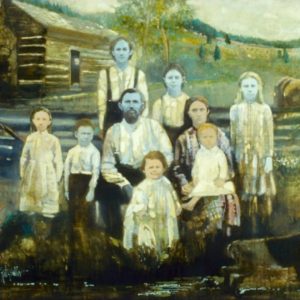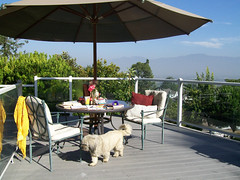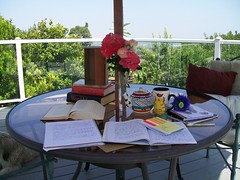Today’s guest is Isla Morely, the author of The Last Blue, who found a family portrait on the internet that she thought had to be a hoax. The picture was of a family, five of whom were blue. Has to be a hoax, right?
She’s going to talk about her researching journey and her book. I hope you enjoy this tale.
Book Synopsis:
A luminous narrative inspired by the fascinating real case of “the Blue People of Kentucky” that probes questions of identity, love, and family.
In 1937, there are recesses in Appalachia no outsiders have ever explored. Two government-sponsored documentarians from Cincinnati, Ohio—a writer and photographer—are dispatched to penetrate this wilderness and record what they find for President Roosevelt’s Works Progress Administration. For photographer Clay Havens, the assignment is his last chance to reboot his flagging career. So when he and his journalist partner are warned away from the remote Spooklight Holler outside of town, they set off eagerly in search of a headline story.
What they see will haunt Clay into his old age: Jubilee Buford, a woman whose skin is a shocking and unmistakable shade of blue. From this happenstance meeting between a woman isolated from society and persecuted her whole life, and a man accustomed to keeping himself at lens distance from others, comes a mesmerizing story in which the dark shades of betrayal, prejudice, fear, and guilt, are refracted along with the incandescent hues of passion and courage.
Panning across the rich rural aesthetic of eastern Kentucky, The Last Blue is a captivating love story and an intimate portrait of what it is like to be truly one of a kind.
Please give Isla Morely a warm welcome.
“Hoax!” I thought. On my screen was a grainy, old-fashioned portrait of a family of nine people, five of whom were blue. Who believes anything on the internet these days? Had I not been so intent on avoiding the edits I was supposed to have completed on my current novel, I might have closed my laptop and returned to my manuscript, but instead, I took the bait. Click.
No, not hoax at all. The article featured a family who lived more 100 years ago in the wilderness of eastern Kentucky, not too far from Hardburly, who came to be known as “the blue people of Troublesome Creek” and who inspired my latest novel, The Last Blue. Yes, they were unmistakably and shockingly blue. The color of a bruised plum, according to some eye-witness accounts. I expected many to have written about it, but as I started to research, I found very little except a four-page article written by Cathy Trost, published in a now-defunct Science journal in 1982. Few knew about the blue people, arguably one of the most fascinating medical cases of all time.
The real-life account begins with Martin Fugate, a French orphan who immigrated to the United States and settled in Kentucky in 1820. He married and started a family, and soon starting having children who were born blue. Large families were typical in those days, and the Fugates, along with three or four other families, clustered in isolation from the rest of the world until those who were blue were not too uncommon.
From Cathy Trost’s account, blue people kept to themselves. Read between the lines and you get a sense of the stigmatizing, prejudice and social avoidance these families must have faced. Trost describes how a renowned hematologist from Lexington came to the area to investigate rumors of blue people, giving chase after spotting a blue person only to get to the top of the hill and discover they’d disappeared. Having given up, the doctor was preparing to return to the city when two blue people snuck into the local clinic. Keeping to the shadows of the hallway, the couple wanted his help. “You could tell how much it bothered them to be blue,” the doctor said, reporting the emotional pain he saw in their faces.
What especially caught my attention was a brief description near the end of the article about a man purportedly married to “the bluest woman who ever lived.” Though she had died many years prior, he refused to live anywhere but the log cabin he had built for her with his own hands, a stone’s throw from her grave. When asked about his wife’s peculiar coloring, he refused to acknowledge she’d been blue. If love is colorblind, surely this was a fine example. Instantly, I knew I would write a love story that explored the meaning of identity, belonging and what it is to be truly one of a kind, an undertaking that took me five years.
Besides investigating the medical condition and whether or not there were cures and treatments, I had to do a lot of research into the Great Depression. The deepest hollers of eastern Kentucky were also largely unexplored until roads were built in the hills, and though the region had been made famous by Daniel Boone and the Hatfields and McCoys, it had been plagued by stereotypes of mountain men, snake handlers and hillbillies. To this day, many stereotypes persist. The last thing I wanted to do was perpetuate those falsehoods.
Thanks to the contributions made by hundreds of writers and photographers employed by Roosevelt’s Works Progress Administration in the Thirties, there is a trove of photographs, field notes, and audio recordings that bring to life a bygone era. But photographs tell only so much of the story, and often they too serve an agenda. What was left then for me to do but to dip the bucket of individual experience and corporate wisdom into the deep well of imagination? The Last Blue, entirely fiction, is the result I hope rings utterly true.
Can you believe it? Very fascinating, and I bet the novel is too.
You can view the book trailer below:

Isla Morley grew up in South Africa during apartheid, the child of a British father and fourth-generation South African mother. During the country’s State of Emergency, she graduated from Nelson Mandela University in Port Elizabeth with a degree in English Literature.
By 1994 she was one of the youngest magazine editors in South Africa, but left career, country and kin when she married an American and moved to California. For more than a decade she pursued a career in non-profit work, focusing on the needs of women and children.
Her debut novel, Come Sunday, won the Janet Heidinger Prize for fiction and was a finalist for the Commonwealth Prize. It has been translated into seven languages. Her novel, Above was an IndieNext Pick, a Best Buzz Book and a Publishers Weekly Best New Book. The Last Blue is her third novel.
She has lived in some of the most culturally diverse places of the world, including Johannesburg, London and Honolulu. Now in Los Angeles, she shares a home with her husband, daughter, three cats and five tortoises. Follow her on Facebook.


 The real-life account begins with Martin Fugate, a French orphan who immigrated to the United States and settled in Kentucky in 1820. He married and started a family, and soon starting having children who were born blue. Large families were typical in those days, and the Fugates, along with three or four other families, clustered in isolation from the rest of the world until those who were blue were not too uncommon.
The real-life account begins with Martin Fugate, a French orphan who immigrated to the United States and settled in Kentucky in 1820. He married and started a family, and soon starting having children who were born blue. Large families were typical in those days, and the Fugates, along with three or four other families, clustered in isolation from the rest of the world until those who were blue were not too uncommon. What especially caught my attention was a brief description near the end of the article about a man purportedly married to “the bluest woman who ever lived.” Though she had died many years prior, he refused to live anywhere but the log cabin he had built for her with his own hands, a stone’s throw from her grave. When asked about his wife’s peculiar coloring, he refused to acknowledge she’d been blue. If love is colorblind, surely this was a fine example. Instantly, I knew I would write a love story that explored the meaning of identity, belonging and what it is to be truly one of a kind, an undertaking that took me five years.
What especially caught my attention was a brief description near the end of the article about a man purportedly married to “the bluest woman who ever lived.” Though she had died many years prior, he refused to live anywhere but the log cabin he had built for her with his own hands, a stone’s throw from her grave. When asked about his wife’s peculiar coloring, he refused to acknowledge she’d been blue. If love is colorblind, surely this was a fine example. Instantly, I knew I would write a love story that explored the meaning of identity, belonging and what it is to be truly one of a kind, an undertaking that took me five years.
 You’d think this would do it. You’d think I’d spend the hours my daughter is at school typing furiously away at the next novel, occasionally rubbing the crystal my friend promised unleashes the imagination, trying to persuade the cat not to keeping marching back and forth across my keyboard. But no. It’s outside you will find me. On the deck at the table where the view beyond the Magnolia trees stretches for miles. The voices in my head have to compete with the mockingbird which is so desperate for a mate he has added to his repertoire the sound of the neighbor’s rap music. I wonder if I could place an ad in the personals for the poor guy. The koi swim in the pond behind me as Samson, our dog, scans the sky for that beastly blue heron which treats the pond as his personal buffet. Every day, the lizard pays me a visit. He does a few push-ups as though to remind me that I can’t spend the whole day sitting observing all creation. Come on, love, back to work! he seems to insinuate.
You’d think this would do it. You’d think I’d spend the hours my daughter is at school typing furiously away at the next novel, occasionally rubbing the crystal my friend promised unleashes the imagination, trying to persuade the cat not to keeping marching back and forth across my keyboard. But no. It’s outside you will find me. On the deck at the table where the view beyond the Magnolia trees stretches for miles. The voices in my head have to compete with the mockingbird which is so desperate for a mate he has added to his repertoire the sound of the neighbor’s rap music. I wonder if I could place an ad in the personals for the poor guy. The koi swim in the pond behind me as Samson, our dog, scans the sky for that beastly blue heron which treats the pond as his personal buffet. Every day, the lizard pays me a visit. He does a few push-ups as though to remind me that I can’t spend the whole day sitting observing all creation. Come on, love, back to work! he seems to insinuate. I take another sip of tea, then lift my pen, and turn to a fresh page in my notebook. The bees hum, and in the far distance, cars roar along the freeway, going someplace important, no doubt. But my soul tunes to another sound; another story is waiting to be told.
I take another sip of tea, then lift my pen, and turn to a fresh page in my notebook. The bees hum, and in the far distance, cars roar along the freeway, going someplace important, no doubt. But my soul tunes to another sound; another story is waiting to be told.



